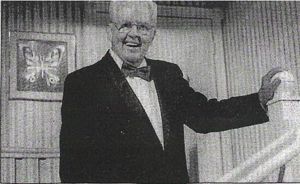Marion Civic Theatre
Name Changes
Before the theater became known as Marion Civic Theatre, it was called Marion Adult Theater. This was because only adults could participate. (Appendix I ) Most productions were held in the Spencer Hotel Ballroom.(Appendix A) . Their first production was “Good-By My Fancy”, and it was performed in 1951.(Appendix E ) The name was changed to the Marion Community Players. They changed the name so that the town would realize that the theatre now catered to actors of all ages, and was no longer just for adults. (Appendix I ) The name was not officially changed to Marion Civic Theatre until 1965. (Appendix F). Finally, after years of holding the shows at other facilities and the Hostess House ballroom, the actors moved into what is known as a “Proscenium Theatre” (Appendix G ).
Financial Troubles
After they were situated with their new home and name, the Civic theatre encountered some hard times. Financial trouble was just around the bend for the newly accommodated theatre. Since then the Civic theatre has always had just enough money , but had never been extremely rich. Many people, just thought this added to the charm. All the actors and actresses there just joined in and helped where help was needed. “It took over three weeks to do all the painting” (Appendix B ). Along with performing these actors, painted sets, built sets, directed, and even wrote some of the shows themselves.(Appendix B ). The Community School of the Arts (CSA) which was founded in 2002, has in a way joined forces with Civic, and helped them through some difficulties. They put on a large holiday production, and donated the money they received from the ticket sales to the Marion Civic Theatre.(Appendix C ) After some budget tightening, and some generous donations, it looked like Civic was back on it’s feet again. The Community Foundation provided them with a $50,000 grant.( Appendix H ) Now, it was time for a make over. The theatre “greats” wanted to keep the theatre’s old-fashioned feel yet it needed to be updated as well. They fixed the holes in the brick walls (see appendix H), and made the main theatre smaller and intimate, like those in New York. (Theatre/ face lift-Tribune)
New blood in the theatre
Although the action never stopped, more productions and better attendance ensued after the theatre’s refurbishment. There were several key players in Marion Civic’s success. One of the legends was Jim Shildmyer. Several people think of him and Civic theatre as being hand in hand. It was his baby, his love, and he was completely dedicated to it. (Appendix B). He was so dedicated to it that he even developed a program to ensure it’s future. He started teaching kids to act. (See bottom of Appendix H) He offered inexpensive lessons, and after the completion of their “semester” they would put on a performance using the Civic Theatre’s stage. This got the kids involved in Civic, and quite a few stuck with it to do other plays with Civic. Jim Shildmyer’s plan had worked. Along with the giants of theatre was Tom Huber. He was a drama teacher for a living, and one of the most joyous people that have ever passed though Civic’s doors. He, Jim, and others were all there through the major development of the modern day Civic Theatre. Both of these men passed away from disease. Jim’s disease made it so that he could no longer talk. Many thought that could at least slow him down, but it didn’t. He went right out and bought a translating machine, and then went to finish directing his rehearsal! He was there almost since the beginning of the Marion Civic. Right by his side was Tom Huber. These men loved the theatre, and were extremely concerned with interesting youth in it so that their baby could continue to thrive, and be pleasing.(Appendix J ). Along with these cornerstones is Carla Tucker.( See Appendix H) Carla has been the prop mistress, done stage crew, set work, but she has one true passion. That would be the costuming. She knows where everything is, and it is her job to make sure those garments stay in good shape, and find things for newer people to wear in shows. She is always seen bustling about doing something, or getting a piece that would just make a dull scene more memorable. (Appendix H). There were many other greats of the theatre, and all were and are determined to keep with the theatre, and inspire others to pursue it as they did.
Overview
Marion Civic Theatre underwent several changes. They had three different names, a new location, then a refurbished location. They also had an adult theatre begin to incorporate younger or older people into it. They have seen many starts fade, and made many come to light, and realize their potential. Through financial loss, and gain it stayed together. The one element of the Marion Civic theatre that has not changed at all, due to all that was previously mentioned, is spirit. To be able to start something so miraculous, change it over and over, be not profitable, and keep all these legends around is something not every town theatre can do. This is our past, and from it the future actors and actresses can learn what to do, and what to avoid. The spirit to fight for something you love doing is among it. The spirit of the thespians lives on.
